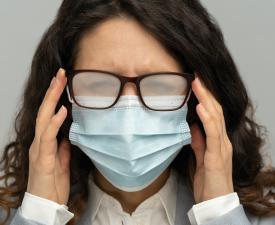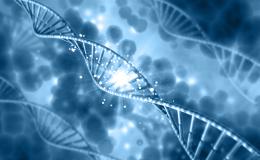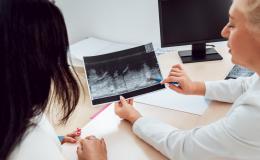Does Your Mask Fog Your Glasses? That's Good for You!
February 9, 2021
Mask wearing is one of the most important and effective mitigation strategies to limit the spread of COVID-19 (COVID).

Initially, masks were worn during the pandemic to lower the amount of virus-containing microdroplets released into the air by infected individuals and inhaled by uninfected individuals. Now, observational data suggests that mask wearers may not only be less likely to become infected with SARS-CoV-2 (CoV-2), the virus that causes COVID, but may actually have less severe cases of COVID if they become infected.1,2,3
Some researchers propose that mask wearers may have less severe COVID cases because they are likely inoculated, or infected with, lower doses of CoV-2 than individuals that don’t wear masks. Other disease experts, however, find this explanation highly unlikely. They argue that while CoV-2 replication is dependent on virus dose, COVID severity is not.4 Additionally, the observational evidence of COVID severity includes populations where cloth masks are used, and fabrics are highly variable in both their capacity to filter the virus and the tightness of the mask fit.
So why do masks work? Two researchers from the National Institutes of Health (NIH) offer a unique perspective, suggesting that masks may decrease the severity of COVID not by reducing the amount of virus a mask wearer inhales, but rather by hydrating the wearer’s respiratory tract, particularly during the colder, drier winter months.5
To better understand why hydrating the respiratory tract during the winter months would be beneficial, it’s important to understand what different types of masks do to the air we inhale. The researchers of the NIH study measured how much the air humidity increased in a sealed chamber at three different temperatures when wearers wore one of four types of masks: an N95 respirator mask; a surgical mask; a two-layer, cotton-polyester blend cloth mask; and a thick, lined cotton mask. If the mask absorbed water from the wearer’s exhaled air over time, the humidity in the chamber would increase less than it would if the subject was not wearing a mask. The researchers found that at every temperature tested, the humidification of the thick cotton mask was about two times that of the surgical mask, with the N95 and cloth mask humidification levels falling in between. Importantly, this means that water being trapped in the mask from the wearer’s exhaled air conditions the wearer’s inhaled air with more moisture, hydrating the respiratory tract.
The researchers of the study suggest that hydrating the respiratory tract, particularly in the cold, dry winter months, is important when we think about the severity of COVID for two main reasons. First, they argue that humidifying inhaled air may actually reduce the spread of CoV-2 infection in the lungs by reducing the formation of virus-containing microdroplets capable of introducing the virus to uninfected areas of the lungs. Secondly, mucociliary clearance, which functions in sweeping away pathogens and debris, and the innate immune response are impaired when surfaces of the respiratory tract are not adequately hydrated. Allowing these pathogen clearance mechanisms to function more effectively with improved hydration likely helps the respiratory and immune systems more efficiently eliminate infection.
So while wearing a mask and having your glasses fog up is a total drag, it’s also a good reminder of a secondary way your mask may be protecting you: by keeping your respiratory tract hydrated. And while maintaining respiratory tract hydration may not be as difficult during the summer months, it’s still important to mask up when you’re in the presence of other people to reduce the number of potentially virus-containing microdroplets we breathe in the air. It’s a simple way to protect yourself and others and, as we know now, may even decrease the severity of COVID-19.




